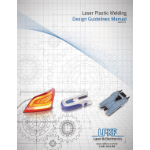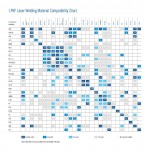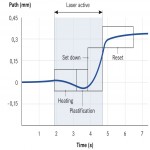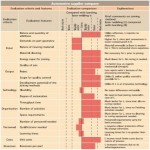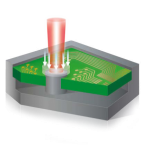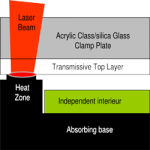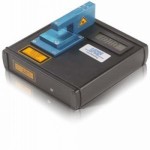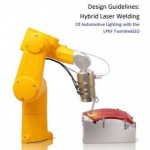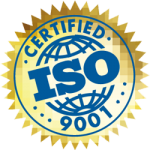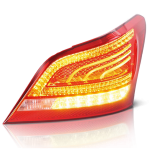This very popular document has just been updated to version 4.0, and is now available. The Laser Plastic Welding Design Guidelines is a powerful document for engineers designing applications for laser plastic welding. This improved document covers the main factors affecting a quality weld, material considerations, process types, and much more.
White Paper
Material Compatibility Chart
This chart displays the most common, weldable thermoplastics. Each sample of this study was done with the plastic materials in their natural state. Please take note of the color system which indicates weld quality.
For more information on plastics a compatibility please see the Laser Plastic Welding Design Guidelines document or the Design Guidelines webinar.
Quality Assurance for Laser Polymer Welding Processe
Quasi-simultaneous Laser Welding
Transmission laser welding of polymers is a well-established industrial joining method, its reliability makes it particularly suitable for applications where very high weld seam quality is specified. A number of quality assurance methods are available when using this technology to safeguard the specifications demand for quality. These quality assurance methods are suitable for implementing a zero-error strategy, under very economically attractive conditions. This three-part series of articles discusses the different approaches.
Competing Processes – Adhesive Bonding versus Laser Welding
The increasing adoption of laser welding is due in no small part to the many technical advantages it offers. With regard to the economic advantages, prejudices still exist on account of higher investment costs for suitable materials. Any comparison with other processes must consider all aspects.
Black-to-Black Laser Transmission Welding
Laser plastic welding, also known as through transmission welding, is quite simple in its essence (see Basic Process Video). Laser radiation is shot through an upper transmissive plastic part and the energy is absorbed by the lower layer, creating heat at the interface and melting both parts.
However, the process does not always seem so intuitive. For instance when welding colored materials, specifically ones with opaque upper layers. Read the rest of this entry »
LQ-Spot Laser Staking System
The LQ-Spot is a hot riveting system designed for mounting circuit boards into plastic housings. A project typical done with imprecise welding systems, glue or screws; there was a lot of room for improvement. The LQ-Spot provides perfectly reliable mounting with no chance of damaging the circuit board. The precise control over placement of the heat makes it ideal for sensitive circuit board mounting jobs.
Clamp Tools and Fixturing in Laser Plastic Welding
Solid knowledge and execution of clamping and fixturing can have a profound effect on the laser welding process. To ensure quality welds during laser plastic welding, intimate contact between the two parts is paramount. Close contact will allow for adequate heat to be transferred, through heat conduction, from the absorbing lower layer to the transmissive upper layer.
TMG2 Handheld Transmission Testing System
The LQ-TMG2 is a handheld unit design for testing the transmission rates of plastics. Excellent for material selection, quality control and testing; the TMG2 is becoming an industry standard for ensuring proper material transmission.
Design Guidelines: Hybrid Laser Welding of Automotive Lighting
This design guide is an elaboration on the original LPKF Design Guidelines for Laser Plastic Welding. You will find this document has a specific focus on automotive exterior lighting. All of the considerations have been adapted to this topic and other details have been added.
The purpose of this Automotive Lighting design guide is to help engineers understand the process and the type of considerations required to implement laser hybrid welding in auto lamp assemblies.
Laser hybrid welding of automotive lighting is a promising technology offering many advantages over traditional welding methods (hot-plate, vibration, ultrasonic, etc.) including: simple joint designs, the ability to handle large and complex shapes and the elimination of the post-weld annealing process.
Quality Control – Laser Plastic Welding, Impossibly Consistent
Quality control is a main factor in the development and manufacture of any new product. From pre-production testing to in-line process monitoring, control mechanisms often drive much of the process of bringing a product from concept to production.
